OLED displays use organic materials that emit light when electricity is applied. OLEDs enable emissive, bright, thin, flexible and efficient displays. OLEDs are set to replace LCDs in all display applications - from small displays to large TV sets.
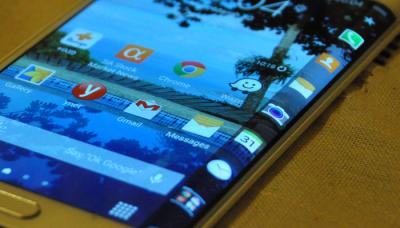
Samsung's Super-AMOLED displays, announced in January 2010, are AMOLED displays for mobile devices (such as smartphones, wearables and tablets) with an integrated touch function. The thickness of the touch sensor is just 0.001 mm and this allows the screen to provide better images and to have great visibility even in direct sunlight compared with regular AMOLED displays with an external touch layer.
Super AMOLED and the PenTile matrix
Samsung's Super-AMOLED displays use a Pentile matrix sub-pixel design. That means that the green sub-pixel is shared by two pixels and the display has only 2 sub-pixels per real 'pixel' compared to the classic RGB matrix design (or Real-Stripe). You can see a PenTile matrix vs a Real-Stripe one on the images below (the PenTile is on the right). Newer Super AMOLED displays use a different PenTile matrix (Diamond Pixel pattern).
Super AMOLED vs Dynamic AMOLED
In 2019 Samsung introduced its next-generation mobile display technology, which it calls Dynamic AMOLED. Basically a Dynamic AMOLED is similar to a Super-AMOLED display, but it adds HDR support. It seems as if Samsung is no longer using the Dynamic AMOLED brand for its latest displays.
Further reading
The latest Super AMOLED news:
Dell's 8.4" Super AMOLED tablet is now shipping
Dell's Venue 8 7000, the world's thinnest tablet (6 mm) is now shipping in the US for $400. The Android tablet uses a 8.4" WQXGA (2560x1600) Super AMOLED display (359 PPI), similar to Samsung's own Galaxy Tab S.
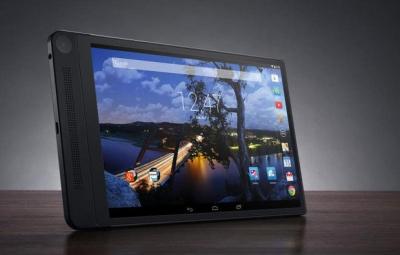
Samsung to release the Gear VR in the US next month for $199
Samsung announced today that the Gear VR (Innovator Edition) will arrive in the US next month. The Gear VR will cost $199 ($249 bundled with a Bluetooth gamepad). Of course you will also need a Galaxy Note 4 (with its 5.7" QHD Super AMOLED) to use this VR HMD.
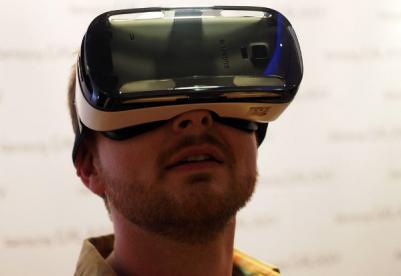
Samsung's Gear VR is a Virtual Reality Headset (developed together with Oculus VR) that uses a Galaxy Note 4 for the screen, processor, sensors and audio.
AT&T to start selling the Galaxy Note Edge on November 7th, will cost $100 more than the Note 4
AT&T announced that it will start accepting Galaxy Note Edge orders on November 7th. The Note Edge will carry a $100 premium over the Galaxy Note 4 - so it will cost $399.99 with a two-year contract. AT&T will also sell it unlocked for $945.99.
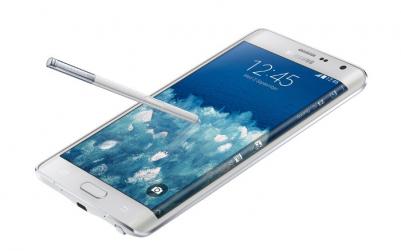
The Galaxy Note Edge is a Note 4 variant that includes a flexible Super AMOLED display that curves around the right edge. The "main" display is a 5.6" QHD (2560x1440), and the right-stripe adds 160 rows that display icons or notifications.
Samsung launches two new mid-range smartphones (the A3 and A5) with AMOLED displays
Samsung announced two new mid-range phones aimed towards the youth market, both with Super AMOLED displays. First up we have the Galaxy A5, which Samsung says is their slimmest phone ever at 6.7 mm. The A5 sports a 5" 720p Super AMOLED display, 13mp camera, 5mp front camera for selfie shots, 1.2Ghz CPU, 2GB of RAM, 16GB of storage memory and a 2,300 mAh battery. As in several of Samsung's latest smartphones, it uses a stylish metal body.
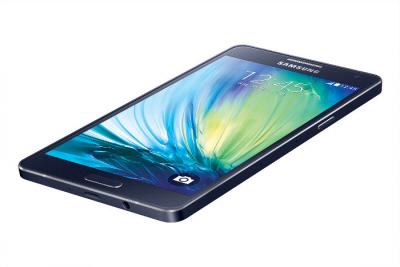
The second phone is the Galaxy A3, the A5's smaller sibling - with a 4.5" qHD (960x540) display. It looks pretty similar, but it's actually thicker at 6.9 mm. The specifications are a little below the A5: a 8mp camera (same 5mp front camera), 1,900 mAh battery, 1.2Ghz quadcore CPU, 1GB of RAM and 16GB of storage memory.
SDC to supply AMOLED displays to Chinese smartphone makers
Back in July, there was a report from Korea stating that Samsung Display's CEO wants to expand OLED sales into the Chinese market in a move to diversity and expand the company's OLED customer base. Following Samsung Electronics relatively weak smartphone sales, this is not surprising.

Now there are reports from Chinese media stating that SDC is indeed talking with Chinese smartphone brands for OLED supply deals. According to those reports, Huawei and OPPO are interested in those displays and we should expect AMOLED smartphones from those two companies soon.
Oculus unveils a new VR HMD development kit with an upgraded AMOLED display
Oculus VR recently unveiled their 3rd-Gen VR HMD development kit, codenamed Crescent Bay. Oculus would not reveal any details regarding the display panel used, but they did confirm it is a new OLED display.
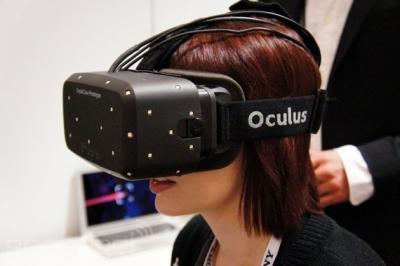
Oculus adopted a low-persistence AMOLED display for their 2nd-Gen VR HMD - and it was later discovered that it is the same Super AMOLED display used in the Galaxy Note 3 (complete with the touch layer and all).
Samsung's Gear S flexible-AMOLED wearable coming to the US "this fall"
Last month Samsung announced their latest smart watch, the Gear S, with a flexible (curved) 2" 360x480 (300 PPI) plastic-based Super AMOLED display. The Gear S includes a 3G chip (it doesn't have to be paired with a smartphone) and Samsung now announced that it is coming to the US "this fall" - and will be available from AT&T, Sprint, T-Mobile and Verizon Wireless.
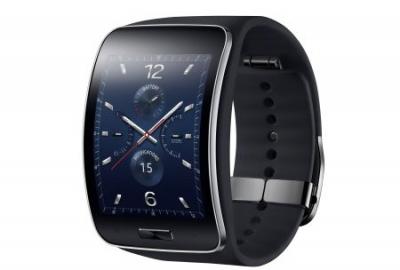
The Gear S runs the Tizen OS, and includes seven sensors: accelerometer, gyroscope, compass, heart rate, ambient light, UV and barometer. It weights 67 grams (blue black edition) or 84 grams for the white edition and includes a 300 mAh battery which should last for two days.
Samsung to ship the Galaxy Note 4 on October 17th
Samsung announced that the Galaxy Note 4 will ship the US on October 17th, with pre-orders starting today. The note will cost $299 with a two-year contract on AT&T or Verizon, or $31.24 per month (for 24-months) with T-Mobile. The Note 4 will ship in Europe a bit sooner.
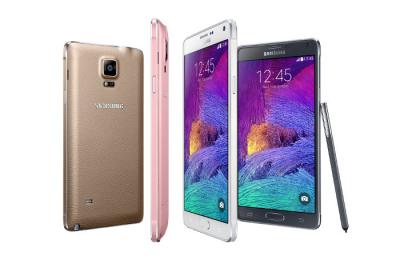
The Galaxy Note 4 has a 5.7" QHD (2560x1440, 518 PPI) Super AMOLED display. According to DisplayMate, it is the best mobile display they ever tested.
DisplayMate: the Galaxy Note 4 display is the best mobile display ever, the flexible OLED on the GN4 Edge is useful and fun
Samsung's newest phones, the Galaxy Note 4 and Note 4 Edge haven't been released yet, but my friend Raymond Soneira already got his hands on two pre-release production devices and posted the first review of these new AMOLED smartphones.

So first of all, the regular Note 4 displays. Ray's conclusion? This is the best mobile display ever tested at DisplayMate, surpassing the AMOLED used in the GS5 and the GN3, and also the one used in the Galaxy Tab S. The GN4 display improves on previous generations in the display density (PPI), color accurate, peak brightness (750 cd/m2) and screen readability in high ambient light and the display power efficiency.
Korean analysts do not expect the Galaxy Note 4 to outsell the Note 3
Korean analysts say that the Galaxy Note 4 will not be enough to boost Samsung's mobile unit sales, and they do not expect the new phone model to outsell the Galaxy Note 3. Hyundai securities expect Samsung to sell 1.5 million GN4 in Q3, and 9.5 million in Q4 - similar to the Note 3 sales following its launch.

The analysts say that while the Galaxy Note 4 has some improvements over the Note 3, such as a better display (5.7" 2560 x 1440 Super AMOLED), better S pen sensitivity and a metal frame, it is not enough to excite consumers.
Pagination
- Previous page
- Page 5
- Next page



